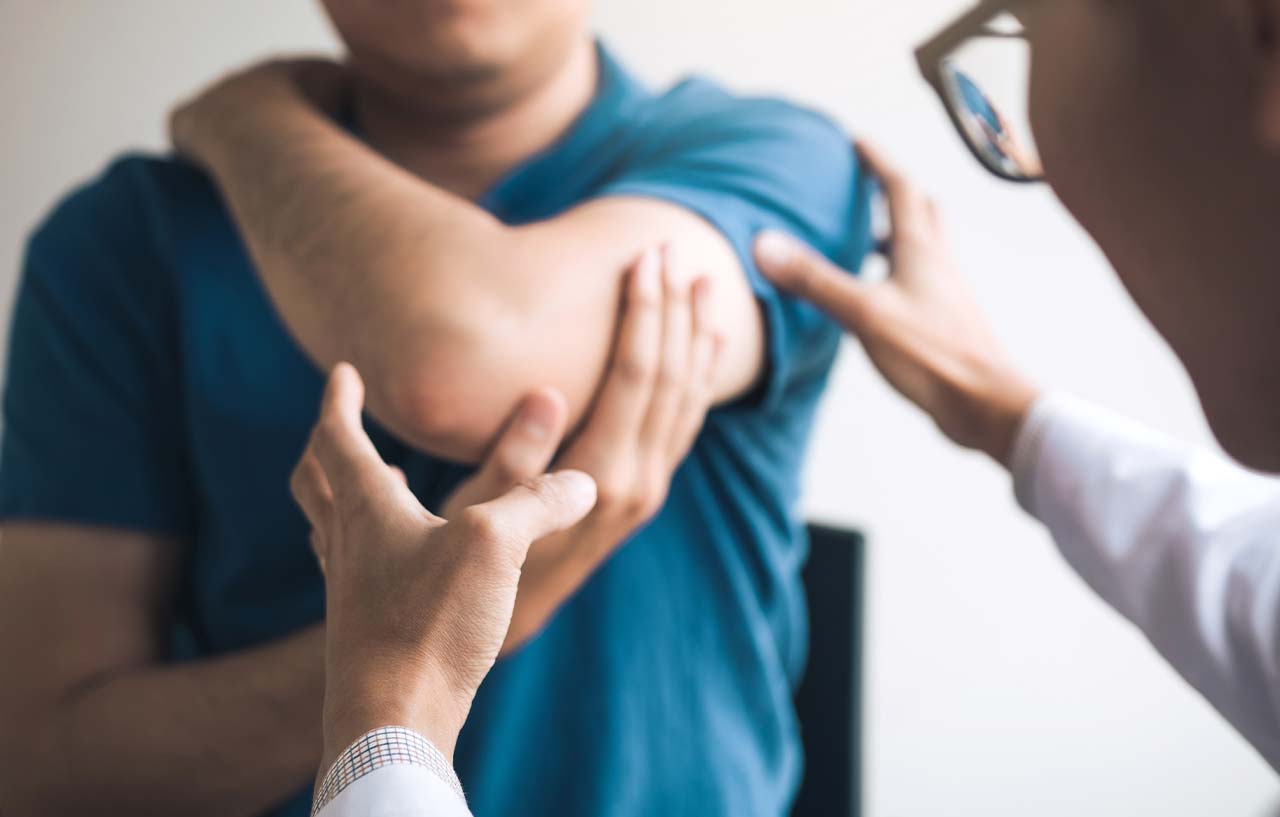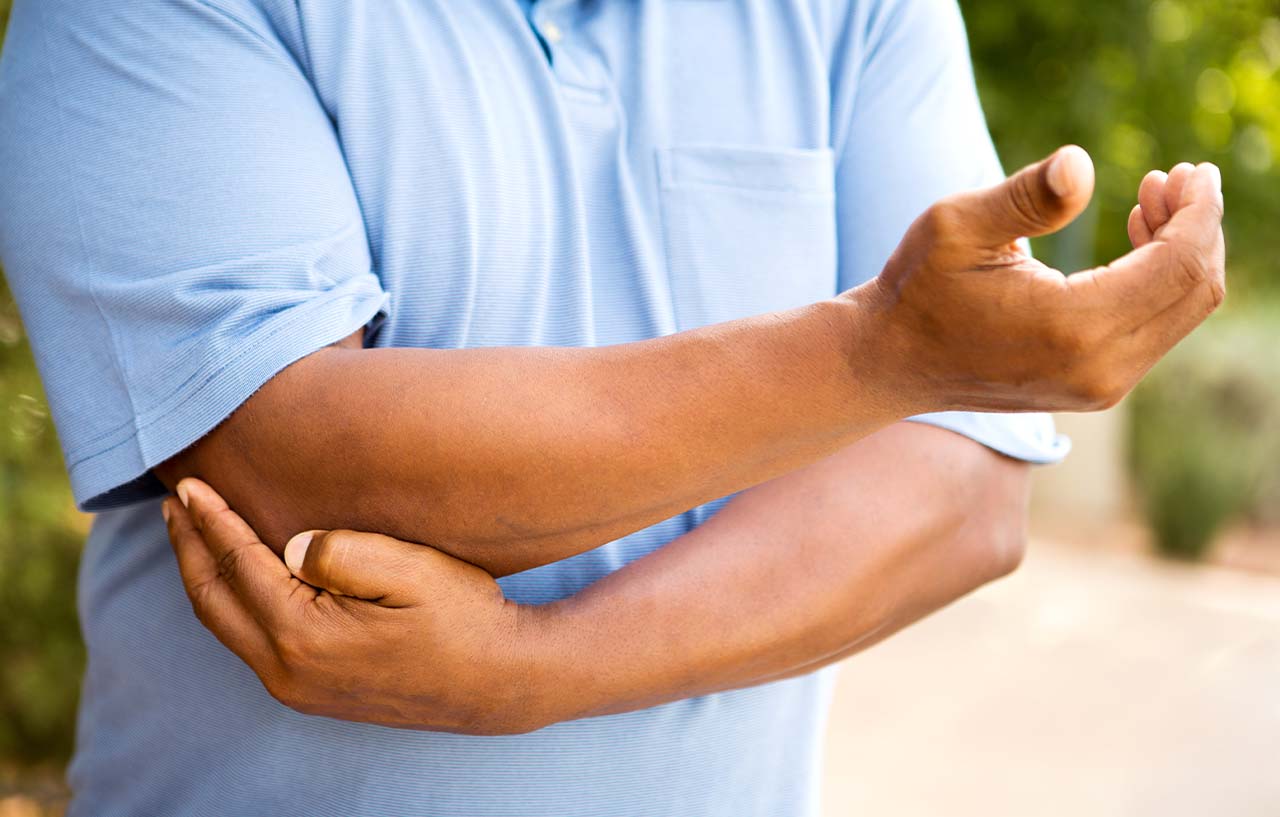Dr Mohammad Waseem, Consultant Orthopaedic Surgeon at Circle Health Group’s The Alexandra Hospital, shares some of the more common causes of elbow pain.
Golfer’s elbow
This is the most common cause of elbow pain, explains Dr Waseem. It is also called medial epicondylitis because it occurs when the medial epicondyle, a tendon that makes the wrist bend towards the palm, is inflamed.
It is caused by overuse of the muscles that help your fingers and wrist bend. This overuse causes inflammation in the bony part inside your elbow.
Symptoms include pain when you bend your elbow or try to grip things, or when you bend your wrist or try to make a fist. Overall, only about 1% of the population has golfer’s elbow, and the condition tends to affect people between 40 and 60 years old.
Tennis elbow, or lateral epicondylitis
Despite the name, this common condition doesn’t only affect tennis players, but it can also affect anyone whose forearm muscles have been strained. This condition is caused by the inflammation of the tendons that run between your wrist and your elbow.
Symptoms include a weak grip, pain, and a burning sensation along your forearm and elbow.
The condition “doesn't always come with tennis, but with rotational movements,” explains Dr Waseem, so you may find that using doorknobs, for example, is very difficult.
Tennis elbow may be caused by improper tennis-playing technique or other repeated activities, such as painting with a brush or roller, using a chainsaw, and other repeated hand motions common for musicians, dentists, or carpenters.
Saturday night palsy, or radial nerve compression
This condition tends to occur when you have slept for a long time in an awkward position, compressing the radial nerve. This nerve compression may cause a tingling sensation, numbness, weakness, or pain.
You may compress your radial nerve if you fall asleep or are immobilised for a long time after consuming large amounts of alcohol, if you have fallen asleep with your hand on a chair, or if someone else has fallen asleep on your arm for a long time.
Triceps tendonitis
The medial head of the triceps can push the nerve out of its natural position, Dr Waseem explains, when you have done too much exercise. Triceps tendonitis results from repeated stress to the tendon, such as when you lift weights or use a hammer repeatedly.
Symptoms of this condition include a tender, swollen, and painful elbow. You may also have difficulty straightening your elbow.
Elbow fracture
Also called an olecranon fracture, an elbow fracture occurs when the end of the ulna — the bone whose pointy end you can feel when you flex your elbow — is fractured. Symptoms include pain and tenderness to the touch, swelling and bruising around the area, and the inability to extend the elbow.
You can also have a radial head fracture, where the radial bone is injured. The symptoms here are similar to the ones from tennis elbow, explains Dr Waseem. Using a sling usually helps the healing process. However, if the fracture is displaced or open, surgery may be necessary.
Elbow arthritis
Elbow arthritis condition is more common in older people. It is caused by wear and tear of the elbow cartilage, or can occur as a result of overuse or injury.
Symptoms include pain when bending the arm, a grinding or popping sensation in the elbow joint, swelling, and stiffness.
Osteoarthritis, rheumatoid arthritis, or post-traumatic arthritis can all cause elbow pain.
 Elbow pain can be caused by various factors, depending on the location of the pain. Usually, minor cases of elbow pain go away on their own. However, more severe cases may require injections or other small surgical procedures to the elbow.
Elbow pain can be caused by various factors, depending on the location of the pain. Usually, minor cases of elbow pain go away on their own. However, more severe cases may require injections or other small surgical procedures to the elbow.
 There are many treatment options for elbow pain at The Alexandra Hospital in Manchester, ranging from non-invasive treatments to surgery.
There are many treatment options for elbow pain at The Alexandra Hospital in Manchester, ranging from non-invasive treatments to surgery.

